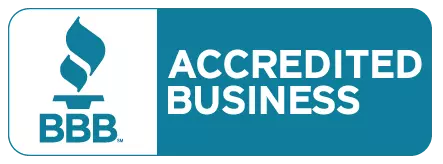Understanding SEO
SEO is the process of optimizing your website’s content and structure to improve its ranking in search engine results for specific keywords or phrases. It involves a combination of on-page and off-page optimization techniques.
On-Page SEO
- Keyword Research: Identify relevant keywords that your target audience is searching for using keyword research tools.
- Keyword Placement: Incorporate your target keywords naturally throughout your content, including in the title, headings, and body text.
- Meta Tags: Optimize your meta title and meta description to include relevant keywords and entice users to click.
- Content Quality: Create high-quality, informative, and engaging content that addresses your target audience’s needs.
- Content Length: Aim for comprehensive content that is at least 1,000 words long.
- Header Tags: Use header tags (H1, H2, H3, etc.) to structure your content and improve readability.
- Image Optimization: Optimize your images with descriptive alt text and relevant keywords.
- Internal Linking: Link to other relevant pages on your website to improve navigation and search engine crawling.
Off-Page SEO
- Backlinks: Build high-quality backlinks from reputable websites to improve your website’s authority.
- Social Media: Share your content on social media platforms to increase visibility and engagement.
- Local SEO: Optimize your website for local search if you have a physical location.
Best Practices for SEO Content Writing
- User Experience: Create content that is easy to read, understand, and navigate.
- Mobile-Friendliness: Ensure your website is mobile-friendly to cater to the growing number of mobile users.
- Page Speed: Optimize your website’s loading speed to improve user experience and search engine rankings.
- Technical SEO: Address technical issues that may negatively impact your website’s SEO, such as broken links and duplicate content.
- Analytics: Use web analytics tools to track your website’s performance and identify areas for improvement.
Keyword Research Tools
- Google Keyword Planner: Free tool within Google Ads that provides keyword ideas, search volume, and competition data.
- SEMrush: Comprehensive SEO toolset with keyword research, competitor analysis, and backlink checking features.
- Ahrefs: Powerful backlink analysis tool with keyword research and competitor analysis capabilities.
- Moz Keyword Explorer: Provides keyword difficulty, search volume, and related keywords.
- LongTail Pro: Specialized tool for finding long-tail keywords with lower competition.
Content Length and Quality
- Google Search: Studies suggest that longer, more comprehensive content often ranks higher in search results.
- E-A-T (Expertise, Authoritativeness, Trustworthiness): Google prioritizes content from authoritative sources with expertise in the topic.
- User Engagement: Content that keeps users engaged and encourages them to stay on your website is more likely to rank well.
Technical SEO
- Mobile-Friendliness: Ensure your website is optimized for mobile devices using Google’s Mobile-Friendly Test.
- Page Speed: Use tools like Google PageSpeed Insights to identify and address performance issues.
- XML Sitemap: Create an XML sitemap to help search engines crawl and index your website’s pages.
- Robots.txt: Use a robots.txt file to instruct search engines which pages to crawl and which to avoid.
- HTTPS: Implement HTTPS to secure your website and improve user trust.
Local SEO
- Google My Business: Create a Google My Business listing to improve your local search visibility.
- NAP Consistency: Ensure your Name, Address, and Phone number (NAP) are consistent across all online listings.
- Local Citations: Build citations on local directories and review websites.
- Local Keywords: Incorporate local keywords and phrases in your content.
Link Building
- Guest Posting: Write guest posts on other relevant websites to build backlinks and increase your reach.
- Broken Link Building: Find broken links on other websites and offer to replace them with links to your content.
- Directory Submissions: Submit your website to relevant online directories.
- Social Sharing: Encourage social sharing of your content to increase visibility and backlinks.
Analytics and Tracking
- Google Analytics: Track website traffic, user behavior, and conversions.
- Google Search Console: Monitor search engine performance, identify issues, and submit sitemaps.
- SEO Tracking Tools: Use specialized SEO tools to track keyword rankings, backlinks, and other metrics.
Advanced Keyword Research Techniques
- Long-tail keywords: Target more specific, less competitive keywords that can drive targeted traffic.
- Keyword intent: Understand the underlying intent behind search queries to create more relevant content.
- Semantic search: Optimize for related terms and synonyms to improve search engine understanding.
- Keyword difficulty: Use tools to assess keyword competitiveness and adjust your strategy accordingly.
Content Optimization Beyond Keywords
- TF-IDF analysis: Optimize your content’s keyword density and distribution using TF-IDF (Term Frequency-Inverse Document Frequency) analysis.
- Entity extraction: Identify and incorporate relevant entities (people, places, things) into your content to improve search engine understanding.
- Schema markup: Use schema markup to provide structured data to search engines, enhancing your content’s appearance in search results.
Technical SEO Best Practices
- Core Web Vitals: Optimize your website’s loading speed, responsiveness, and visual stability to improve user experience and search engine rankings.
- HTTPS and security: Ensure your website is secure with HTTPS to improve user trust and search engine rankings.
- Mobile-first indexing: Optimize your website for mobile devices as Google prioritizes mobile-friendly content.
- AMP (Accelerated Mobile Pages): Consider using AMP to speed up page load times on mobile devices.
Local SEO Best Practices
- Google My Business optimization: Complete your Google My Business profile with accurate information, high-quality images, and consistent NAP (Name, Address, Phone number) details.
- Local citations: Build citations on local directories and review websites.
- Geo-targeting: Optimize your content for specific geographic locations using location-based keywords and targeting settings.
- Local events and news: Participate in local events and cover local news to increase your visibility.
Semantic SEO and Natural Language Processing (NLP)
- Entity graph: Understand how Google’s Knowledge Graph connects entities and concepts to optimize for semantic search.
- Topic modeling: Use topic modeling techniques to identify the main themes and topics within your content.
- Conversational search: Optimize your content for voice search and conversational queries.
AI-Powered Content Creation and Optimization
- AI writing assistants: Use AI tools to generate content ideas, write drafts, and optimize for SEO.
- AI-powered keyword research: Leverage AI algorithms to discover new keyword opportunities and trends.
- Content optimization tools: Use AI-powered tools to analyze your content’s SEO performance and identify areas for improvement.
Content Marketing Strategy and Measurement
- Content marketing funnel: Develop a content marketing funnel to attract, engage, and convert your target audience.
- Content analytics: Use analytics tools to track the performance of your content, measure key performance indicators (KPIs), and make data-driven decisions.
- A/B testing: Experiment with different content variations to identify the most effective elements.
- Attribution modeling: Understand the customer journey and attribute conversions to different touchpoints.
Emerging SEO Trends
- Voice search optimization: Optimize your content for voice search queries and conversational language.
- Video SEO: Optimize your videos for search engines by using relevant keywords in titles, descriptions, and tags.
- AR/VR SEO: Consider optimizing for augmented reality (AR) and virtual reality (VR) experiences to stay ahead of emerging trends.
NLP and Semantic SEO
- Entity graph: Understand how Google’s Knowledge Graph connects entities and concepts to optimize for semantic search.
- Topic modeling: Use topic modeling techniques to identify the main themes and topics within your content.
- Conversational search: Optimize your content for voice search and conversational queries.
User Experience (UX) and SEO
- Core Web Vitals: Prioritize improving your website’s Core Web Vitals (LCP, FID, CLS) to enhance user experience and search engine rankings.
- Mobile-first indexing: Optimize your website for mobile devices to ensure it is indexed and ranked appropriately by Google.
- Accessibility: Make your website accessible to users with disabilities to improve user experience and search engine visibility.
Additional Considerations
- Ethical SEO: Avoid black-hat SEO techniques that can harm your website’s ranking and reputation.
- Search engine algorithm updates: Stay informed about the latest search engine algorithm updates and adapt your SEO strategies accordingly.
- Continuous learning: Keep up with the latest SEO trends and best practices to maintain your website’s competitiveness.




